Waking up with greasy hair every morning can be hugely frustrating. It can make you feel dirty and uncomfortable and maybe even discourage you from leaving the house. The good news is that there are plenty of ways to combat hair getting greasy super fast and get the sleek, shiny hair you’ve always wanted.
We’ll break down everything you need to know about hair greasiness, including why it happens, how to help it, and tips to keep you feeling great in your hair!
What Is Greasy Hair?
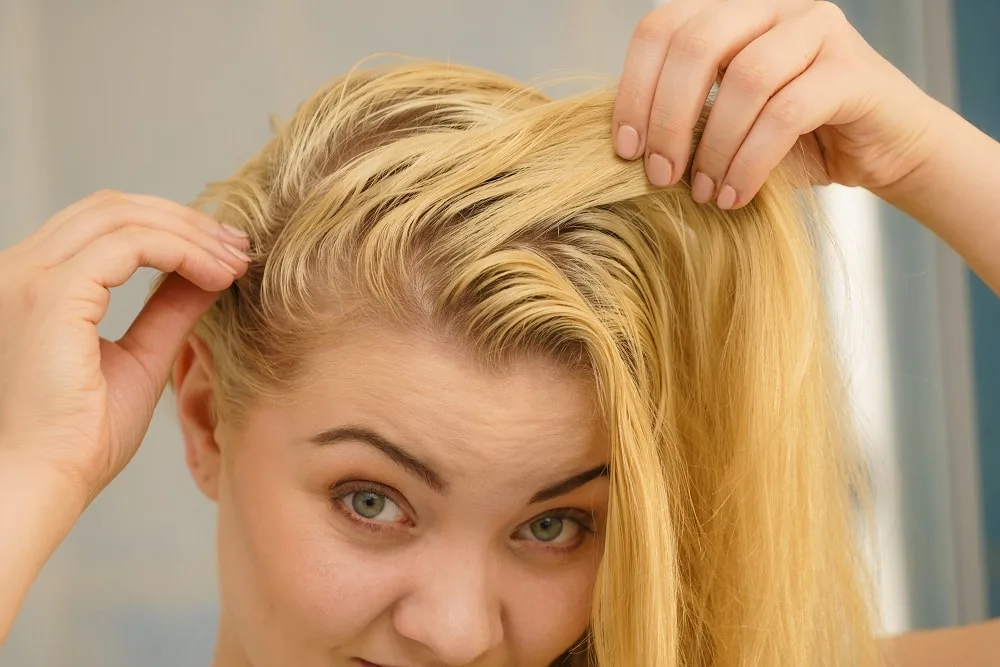
Greasy hair comes from overactive sebaceous glands on the scalp. Humans have sebaceous glands all over their bodies, which produce sebum, a natural oil.
Sebum is a good thing! It helps keep your hair and skin healthy, preventing dryness. But too much can lead to beauty troubles, like skin breakouts and slick, greasy-looking hair.
Why Does My Hair Becomes Greasy So Fast?
So, why you? You likely have friends or family who doesn’t have excessively oily hair, leading you to wonder why you are cursed with enthusiastic sebaceous glands. So, what causes greasy hair?
Unfortunately, some hair types are naturally more prone to sebum build-up. Some people can go days without oil building up on their scalp, while others can see oil in less than 24 hours.
Sadly, most experts believe chronically oily hair is just a genetic characteristic, like having curly or straight hair.
In general, people with straight, fine hair are more likely to notice oil build-up. But people with thick, curly hair can also deal with hair greasiness.
It is often genetic, but some actions or habits can lead to excessive grease build-up. A few causes of overly greasy hair include excessive humidity, intense exercise, overuse of hair products, or frequent touching.
How to Fix Greasy Hair
If you hate your greasy hair, there are some tricks to help keep your hair feeling and looking clean and beautiful.
1. Apple Cider Vinegar
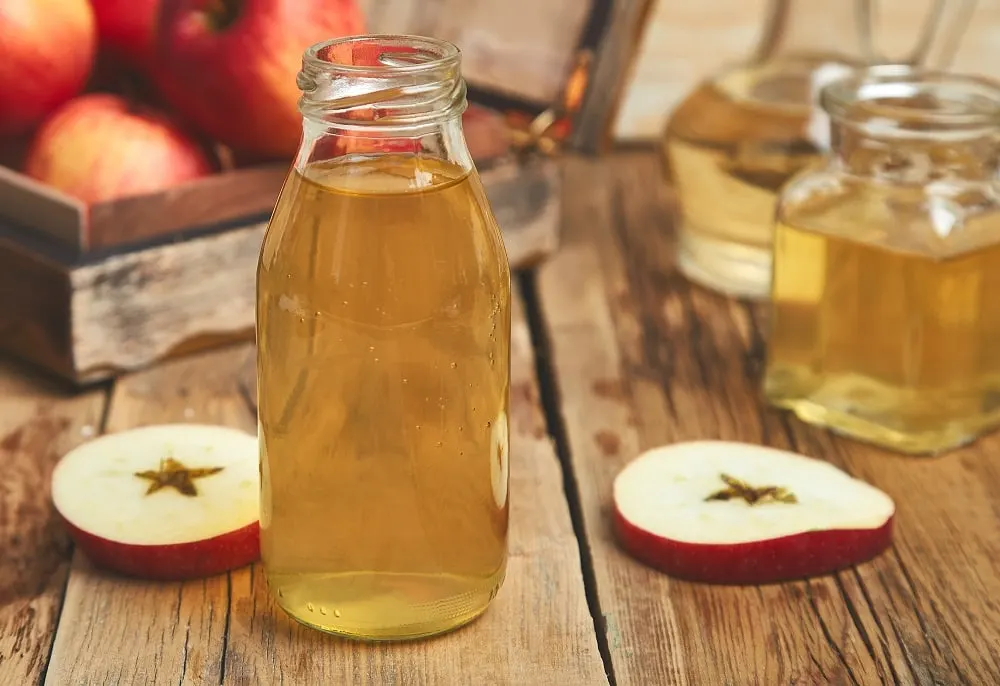
Apple cider vinegar is highly acidic, so it can combat the excess of sebum on your scalp. Mix two tablespoons of vinegar with one cup of distilled water.
After a shower, when your hair is still wet, perform a rinse with the vinegar mixture. Let it sit for around five or ten minutes, then rinse it with cold water.
Do not shampoo it again. Do this two or three times a week to control sebum production.
2. Aloe Vera
Aloe vera has distinct astringent properties, but also nourishes your scalp and relieves irritation. This nutrient-rich ingredient can control greasiness while keeping your hair healthy and beautiful.
Use a few tablespoons of aloe vera juice mixed with a cup of water. Some people add a tablespoon of lemon juice, but you don’t have to. Rinse your hair with this once a week after shampooing.
3. Dry Shampoo
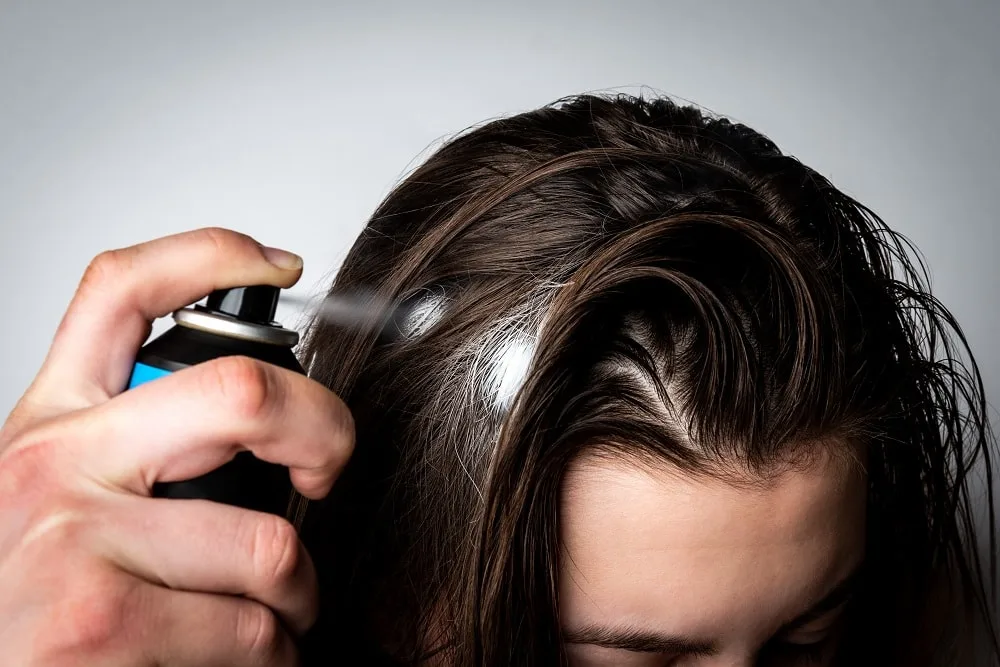
For a quick fix for greasy hair, dry shampoo is a savior. Usually made from rice starch or corn starch, dry shampoo comes in an aerosol can.
Hold segments of your hair up to target the roots. Hold the dry shampoo about one foot away from your hair, and spray in one-inch segments. Holding dry shampoo too close to your hair can result in chalky white residue that’s hard to clean. Then shake your fingers through each segment.
4. Green Tea
Green tea seems to be a magical ingredient that can solve many beauty dilemmas, including oily hair. The polyphenols in green tea improve scalp health and control sebum secretion. Rinse your hair with cold green tea once a week, and let it sit in your hair for half an hour.
You can use green tea bags, steeped and then cooled down. You can also mix green tea powder into hot water, strain it, let it cool, and then apply it to your hair.
5. Teasing
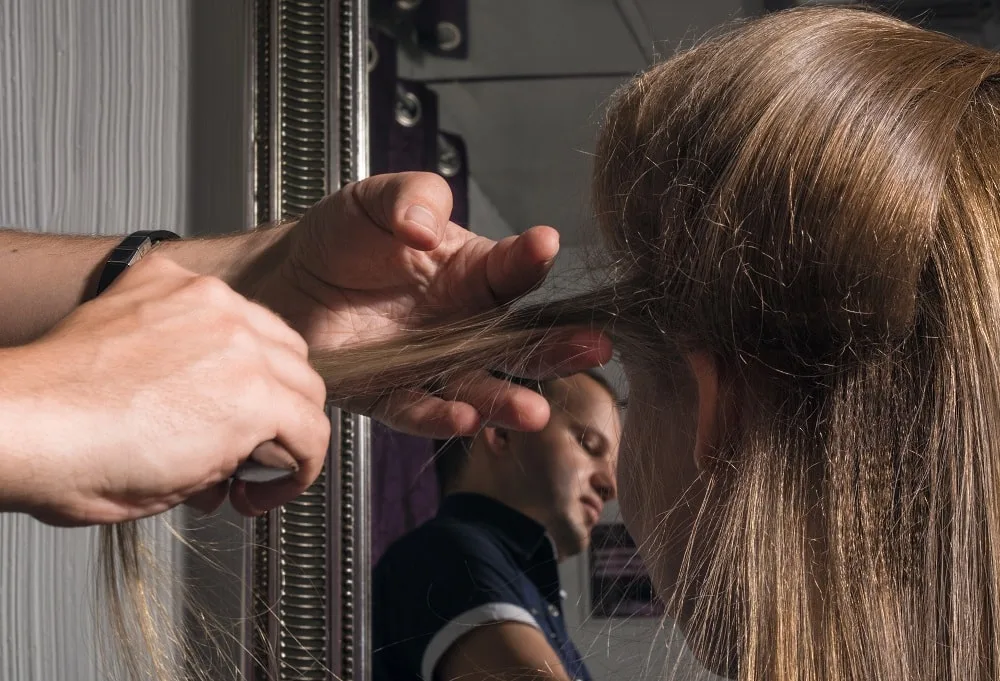
Another remedy on the go, teasing addresses one of the dead giveaways of greasy hair: flatness.
Excess oil weighs hair down and causes strands to stick together. Section your hair and tease in order to boost volume. The extra volume makes your hair easier to style and hides your greasy roots.
6. Baking Soda
Many people with greasy hair use baking soda in place of dry shampoo. But you can also make a scalp mask with baking soda to reduce sebum production.
People think it helps because its alkaline makeup helps balance your scalp and hair’s pH so your skin can properly absorb the extra sebum. Mix baking soda with room temperature water until it forms a thick paste, like toothpaste.
Apply this to your hair, specifically your scalp. Leave it for no more than five minutes, and then rinse it out with cold water. Baking soda can dry out your hair too much, so don’t do this more than twice a month.
7. Epsom Salt
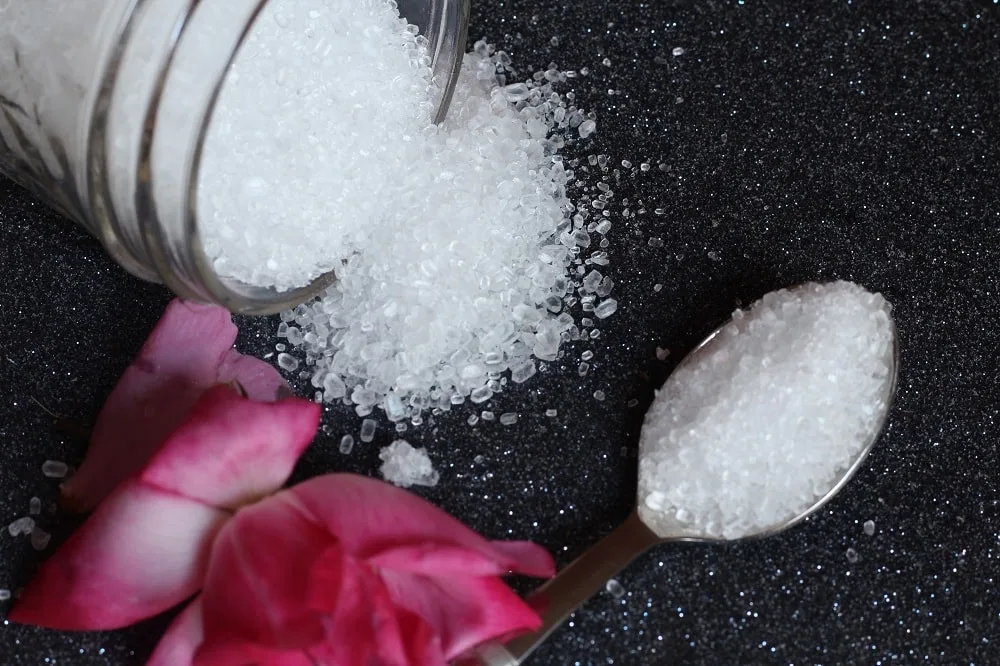
Epsom salt is rich in magnesium ions, which can penetrate your hair follicles and absorb excess sebum before it makes your hair greasy.
The salt can reduce inflammation and discourage your glands from producing excessive sebum. Mix a few teaspoons of Epsom salt into your shampoo and let it sit in your hair for two or three minutes. Don’t do this more than two or three times per week.
8. Coconut & Argan Oil
Both of these oils are excellent solutions for people who have a greasy scalp but dry ends. It may seem counterproductive to put more oil in your hair to try and reduce the amount of oil, but coconut oil can help reduce your hair’s greasiness.
Apply a teaspoon of coconut oil to your hair, from roots to ends. Let the oil sit in your wet hair for an hour before shampooing it. If you use coconut oil, you can use less conditioner or none at all. Coconut oil will condition your hair and make it shiny without adding weight.
And when you put argan oil on your scalp, it can push the sebum down your hair shaft and encourage your sebaceous glands to slow down sebum production. Apply argan oil to your hair once a week and let it sit for an hour before rinsing it with a gentle shampoo.
9. Blotting Paper
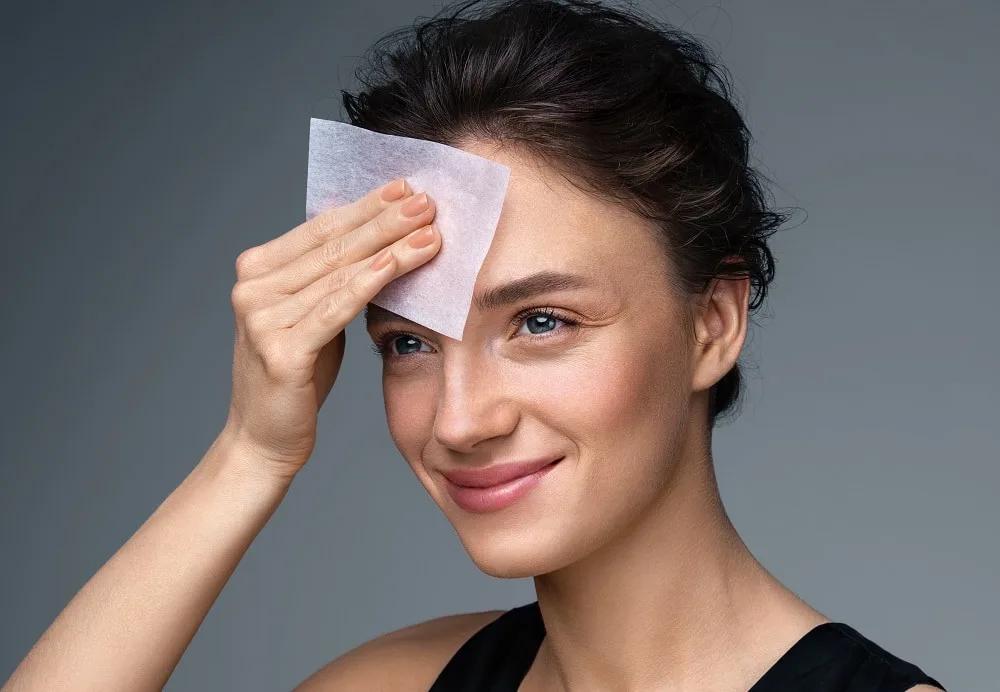
Face oil blotting sheets have been around for years, but did you know that hair oil blotting sheets were as effective?
Hold your hair up in various segments, then place the blotting paper directly on your roots. Rub the paper around small segments, and the blotting paper will absorb excess oils on your scalp.
This method is better for less-intensely hair grease and more localized greasy spots.
Do’s and Don’t’s for Greasy Hair
When you have naturally oily hair, there are a few actions or products you want to avoid. Below are the do’s and don’t’s of caring for greasy hair.
Do:
- Understand your hair type and use products geared toward your hair.
- Try scalp masks for oily skin; usually, fruity ones, like grapefruit or banana, work best against grease.
- Clean all hairbrushes and hair accessories frequently.
- Wash your hair after exercising.
- Try washing your hair every other day to slow down sebum production.
Don’t:
- Use too much shampoo; you only need a squirt the size of a quarter.
- Use too much conditioner; again, only a quarter.
- Use too many hair products.
- Apply conditioner to your roots.
- Use products designed for dry air.
- Spend too much time in the sun or outdoors in high-humidity.
- Use flat irons or chemical hair treatments too often, or at all if possible.
- Touch your hair throughout the day.
- Overbrush your hair, as this stimulates sebum production.
Best Hairstyles to Hide Greasy Hair
1. Space Buns
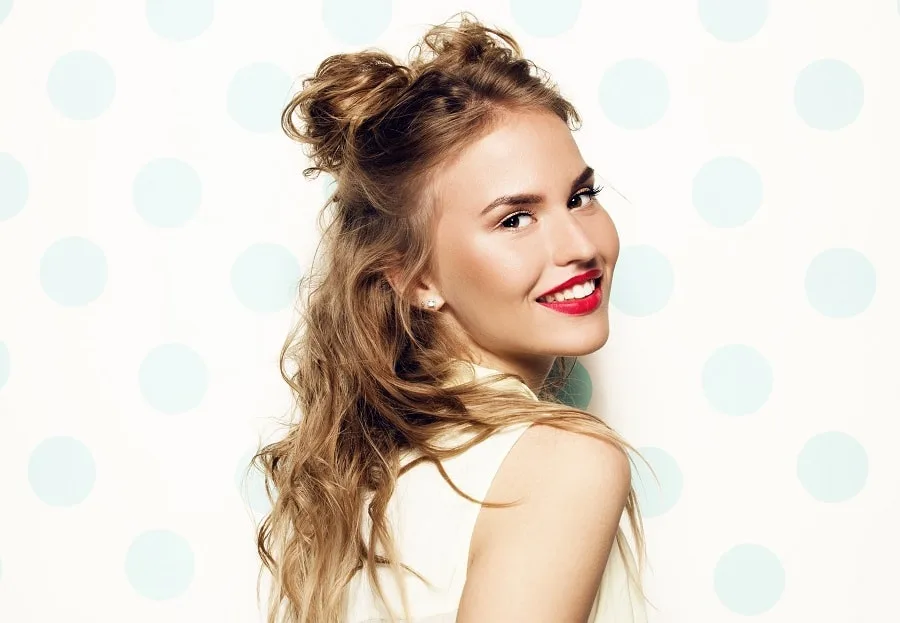
To begin with, space buns are ideal for saving an oily hair day. They are funky, playful, and versatile all at the same time. Go for a straight or zigzag middle part and style the entire or half of the tresses in two ponytails. Swirl them around and secure with pins. Done!
2. Add a Headband
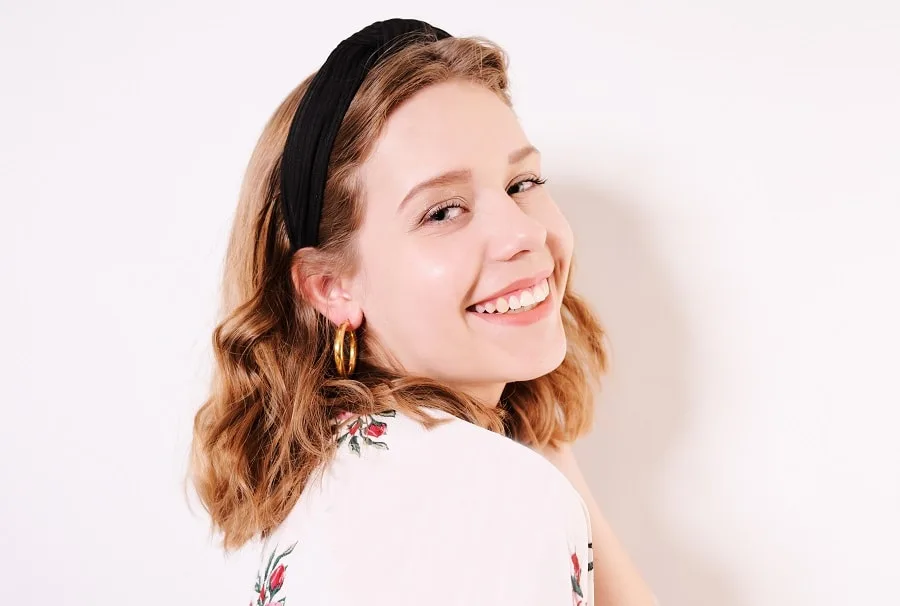
One of those busy/lazy times? Instead of washing your mane, apply some dry shampoo, add some curls, and put on a classic headband matching the outfit. Don’t slick back the strands instead lower the hairband from the top. No one will ever know!
3. Milkmaid Braid
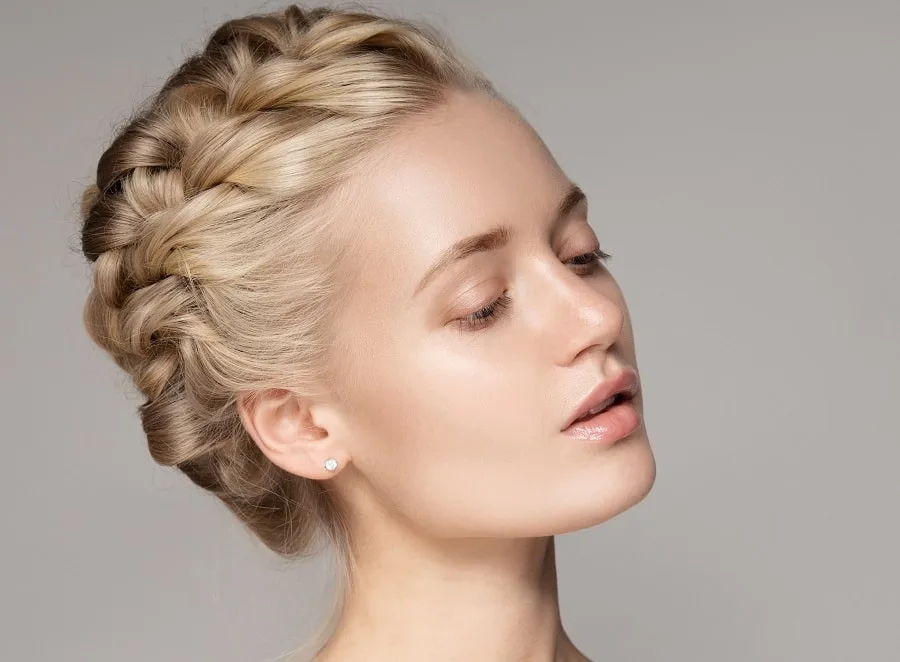
Ladies with long tresses can turn them into a plaited crown to hide hair greasiness. Start knitting the strands away from the face while moving around the hairline or create two French braids and wrap them around the head. Pull the chunks loose and add some adornments for a fancy look. Or don’t!
4. Messy Updo
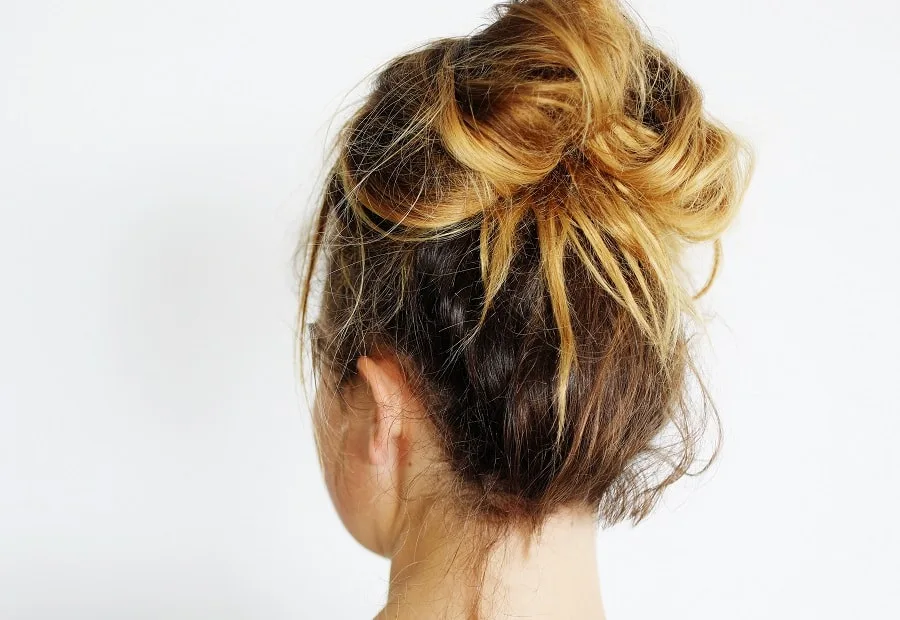
Messy hairstyles have been quite a trend this year and pair up ideally with greased and unwashed hair. Brush the locks and whirl them around in a loose bun with the ends sticking out at the back.
Tug the strands loose as much as possible without unraveling the bun for a ruffled yet sexy look.
5. High Ponytail
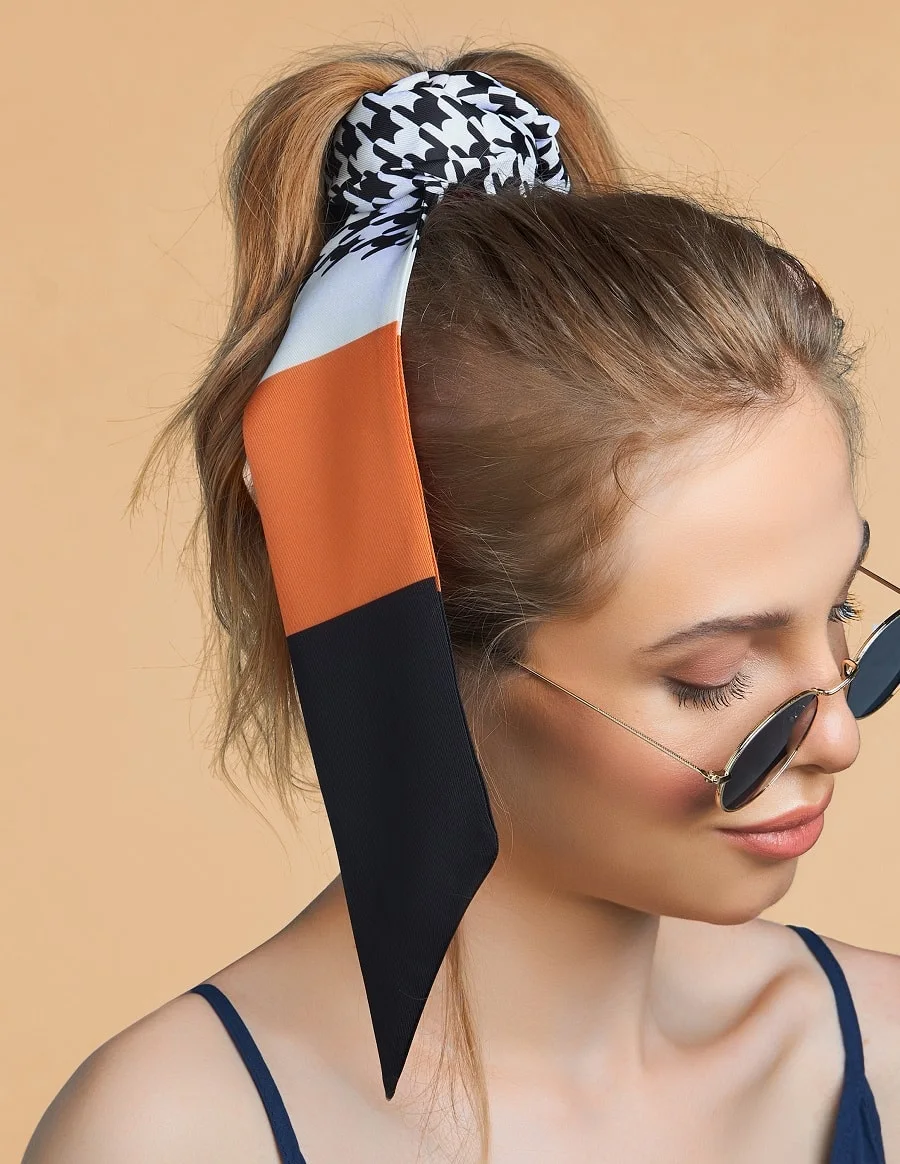
High ponytails are an ideal greasy hairstyle. How? The oil build-up on the scalp helps in slicking back the strands without using any product. Use a scrunchie with a bowknot or wrap a head bandana around the base of the pony for a chic finish.
Greasy Hair Vs. Shiny Hair
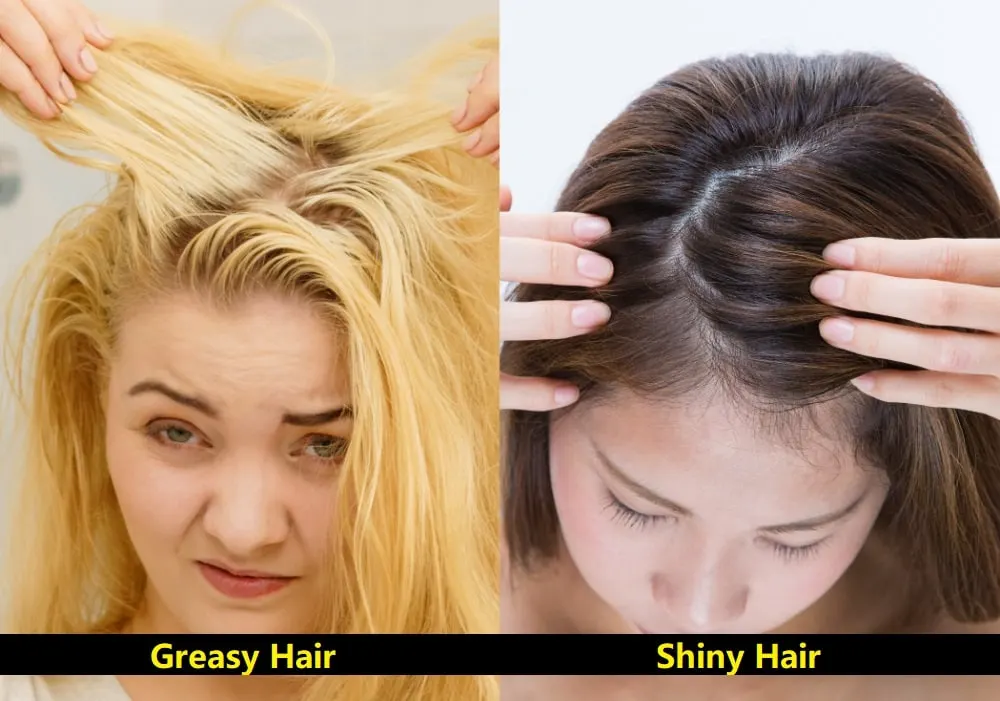
Shiny hair and greasy hair are very different things.
Shiny hair will not stick to your head or feel heavy. Shiny hair is a sign of healthy hair. When your hair is beautiful and shiny, not greasy, it’s because the scalp is clean and the cuticles are laying flat, so all of your hair lays against your scalp evenly.
With greasy hair, the strands are heavier and stick to the scalp. These don’t have the same bounce and flowing movement that shiny, healthy hair does. Oily hair strands cling to one another, while shiny hair strands float and move independently.
FAQs
Below are frequently asked questions concerning greasy hair.
Why does hair become greasy after washing it?
Simply put, the shampoo washed away all the sebum, so your glands activated to replace it.
Can hard water cause greasy hair?
Hard water is more likely to dry your hair, but it depends on what minerals are in your water.
Can oils make your hair greasy?
Absolutely. The oils discussed in this article can help reduce grease, but oil like castor oil, hair mists, and leave-in serums can add to your hair’s greasiness.
Why do hats make your hair greasy?
Wearing a hat does not necessarily make your hair greasier, it just makes it more obvious that your hair is greasy. When you wear a hat, it pushes your hair strands toward your scalp, allowing more of the strands to get oily. It also mats your hair, making the appearance of oil more prominent and unattractive.
Can you dye your greasy hair?
Yes! Greasy hair often handles harsh hair dyes and bleach better than non-greasy hair. Dyes and bleach dry your hair out, but your extra sebum can keep your hair healthy during and after the dying process.
Does pregnancy cause hair to become greasy?
Yes, it’s normal for hair to be greasier during pregnancy because of the fluctuating hormones. The hormones can signal certain bodily processes to speed up, one of which is your sebum secretion.
Does greasy hair indicate any underlying health issue?
Generally no. Greasy hair does not mean you have an underlying condition. This could indicate a skin condition like eczema, psoriasis, or seborrheic dermatitis (dandruff). But usually just means you have healthy and active sebaceous glands.
Why is your hair greasy but scalp dry?
You may feel your hair greasy and your scalp dry because the sebum goes down your scalp and into the hair strands. Another possibility is the pores of your scalp being clogged, pushing the sebum down.
To treat this condition, you should use moisturizing products specific for the scalp, such as hair masks and conditioners.
Does conditioning hair make it greasy?
Yes, conditioning your hair roots can cause oils to build up more quickly. But conditioning your hair and ends will not cause grease.
Should you leave your hair greasy?
Socially, no, you should wash your hair. But leaving your hair greasy for a day or two can help moisturize your hair and scalp.
Can greasy hair hurt?
It can hurt if the sebum begins to suffocate the hair root, causing your follicles to be inflamed and irritated.
Can greasy hair make your scalp itch?
Yes, overly greasy hair can cause dandruff which typically makes your scalp itchy and dry.
Can greasy hair cause acne?
Unfortunately, yes. If sebum from your scalp moves to your face, it can lead to acne breakouts.
What shampoo should you use for greasy hair?
Look for clarifying and deep-cleansing shampoos. Any shampoos that say they’re for hair prone to build-up should be effective.
The good news is that greasy hair is typically a sign of a healthy scalp and productive sebaceous glands. In the end, you can’t control your sebaceous glands, as they’re just doing their job.
But oily hair can be unpleasant and unsightly, so try some of these fixes to keep your hair’s natural oils under control.
